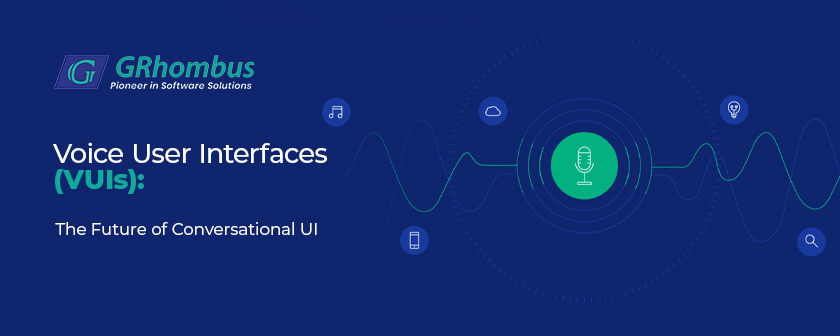Voice User Interfaces (VUIs) are rapidly emerging as the future of conversational user interfaces, transforming how we interact with technology on a fundamental level. By leveraging advancements in natural language processing and machine learning, VUIs enable devices to understand and respond to human speech in a natural and intuitive manner, facilitating a seamless interaction between humans and machines. This evolution toward voice-based interaction represents a significant shift away from traditional graphical user interfaces, promising a more accessible, efficient, and hands-free mode of technology use. As VUIs continue to evolve, they are set to redefine the paradigms of digital interaction, making technology more approachable and integrated into our daily lives than ever before.
Introduction: The Alluring Rise of Voice User Interfaces
The allure of Voice User Interfaces (VUIs) lies in their simplicity and the natural way they enable interaction with technology. This seamless interface is made possible by significant advancements in Natural Language Processing (NLP), which have enabled machines to understand and interpret human language with increasing accuracy and nuance. Additionally, breakthroughs in speech recognition technology have improved the conversion of spoken words into text, making devices quicker and more efficient at understanding user commands. The widespread adoption of voice-enabled devices, from smartphones to smart speakers, has cemented VUIs as an integral part of our daily lives, changing the way we interact with our devices fundamentally.
The Rise of VUIs: A Convergence of Technologies
The evolution of VUIs is a story of technological convergence. It is the coming together of advancements in NLP, machine learning, speech recognition, and cloud computing that has brought VUIs to the forefront of human-computer interaction. This convergence has not only made it possible for machines to understand human language more accurately but also to interpret the context and nuance of our speech, making interactions more natural and human-like.
Benefits of VUIs: Transforming the User Experience
VUIs offer a multitude of benefits that transform the user experience. They make technology more accessible, removing the barriers of complex interfaces and allowing people of all ages and tech-savviness to interact with digital devices effortlessly. VUIs also enable multitasking, as users can interact with their devices without needing to stop what they’re doing. Moreover, VUIs are integral in making technology more inclusive, providing a vital interface for users with physical or visual impairments.
Components and Working of a Voice User Interface
The architecture of a Voice User Interface (VUI) is underpinned by several critical components that work in unison to interpret and respond to user commands. At its core, a VUI comprises an Automatic Speech Recognition (ASR) system, which converts spoken language into text. This text is then processed by Natural Language Understanding (NLU) algorithms to discern user intent. Subsequently, a Dialogue Management system formulates an appropriate response based on this intent, which is transformed into spoken words by a Text-to-Speech (TTS) engine, completing the interaction cycle. These components, integrated with robust AI and machine learning capabilities, enable VUIs to deliver increasingly sophisticated and contextually aware interactions.
Design Principles for Effective VUI
Designing an effective Voice User Interface (VUI) necessitates adherence to key principles that ensure intuitive and user-friendly interactions. Firstly, a VUI should be designed for conversational clarity, using natural language and accommodating varied speech patterns. Consistency in responses and the ability to handle ambiguous or incomplete commands are crucial for maintaining user trust and engagement. The VUI should offer contextual assistance and prompt feedback to guide users through interactions, ensuring they feel heard and understood. Additionally, ensuring privacy and data security is paramount, as users must trust the system with their voice inputs. Adhering to these principles, designers can create VUIs that are not only functional but also delightful to use.
Applications of VUIs: Transforming Diverse Domains
The applications of VUIs are vast and varied, transforming diverse domains:
- Home Automation: VUIs are at the heart of smart home devices, enabling users to control their environment with simple voice commands.
- Healthcare: From appointment scheduling to providing patient support, VUIs are making healthcare more accessible.
- Automotive: In-car VUIs are enhancing driver safety by allowing hands-free operation of the vehicle’s systems.
- Customer Service: VUIs are revolutionizing customer service, offering 24/7 support without the need for human operators.
- Challenges and Future Directions: Shaping the Future of VUIs
Despite their benefits, VUIs face challenges, including privacy concerns, the need for continuous improvement in speech recognition accuracy, and the challenge of understanding diverse languages and dialects. Future directions for VUIs involve addressing these challenges while exploring more personalized and context-aware interactions, ensuring that VUIs can understand not just the words, but the intent behind them.
Conclusion: The Role of Companies Like GRhombus in Shaping the Future of VUIs
As we look to the future, companies like GRhombus Technologies play a crucial role in shaping the evolution of VUIs. By investing in research and development, these companies are at the forefront of addressing the current challenges faced by VUIs and pushing the boundaries of what is possible with voice interaction. GRhombus Technologies, with its focus on innovative solutions and technology-driven services, exemplifies the kind of forward-thinking approach that will drive the future of human-computer interaction through VUIs.
The future of VUIs is bright, with endless possibilities for making our interactions with technology more natural, accessible, and efficient. As we continue to integrate these interfaces into more aspects of our daily lives, the role of companies like GRhombus Technologies in innovating and refining this technology cannot be understated. The journey of VUIs is an ongoing one, but it is clear that they represent a significant step forward in making technology more human-centric.
